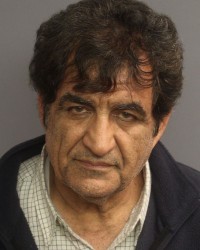Arrested: US Iranian for sending F-35 technical manuals to Tehran
One wonders what is in the heads of security officials at Pratt & Whitney in East Hartford when they cleared Mozaffar Khazaee to work on testing of the engines for the F-35 Joint Strike Fighter. Khazee, a dual US Iranian citizen since 1991 got laid off by P&W last August and steals thousands of pages of documentation when he left for Indianapolis. He was caught by customs officials in Long Beach , California shipping boxes of the F-35 documentation and manuals to his brother in Tehran.
Khazaee was arrested at Newark international Airport on January 9th prior to boarding a flight that would have ultimately taken him to Tehran.
Watch this Fox CT report on the P&W Iran industrial espionage arrest:
Was Khazee simply a disaffected laid off P&W employee with misplaced loyalties or was he a so-called sleeper agent. for the Islamic Regime in Iran? Certainly, he could have done a better job of concealing the documents that he purloined. That incompetence may ultimately have been his undoing. Doubtless both the Pentagon and P&W security will have their hands full investigating this latest security breach. Is this a case of inadequate clearance checks by the maligned security clearance contractor USIS who you may recall cleared Snowden when he took his job in Hawaii with Booz Allen and skipped out with a veritable treasure trove of NSA intercepts to his ultimate destination in Russia? Note that P&W,’s parent corporation, United Technologies Corporation, was caught in an earlier episode with passing unauthorized helicopter software information to China for which it paid $75 million in fines in 2012.
Note these excerpts from in this Hartford Courant article, Ex-Pratt Worker Allegedly Tried To Ship F-35 Files To Iran:
The East Hartford defense contractor, the sole manufacturer of the aircraft’s engine, declined to comment on how Mozaffar Khazaee, 59, slipped thousands of pages of documents, diagrams, blueprints and technical manuals out the door before he was laid off in August along with hundreds of other employees.
Federal authorities arrested Khazaee at Newark Liberty International Airport in New Jersey on Thursday before he could board a plane bound for Frankfurt, Germany, to meet a connecting flight to Tehran, Iran, according to the U.S. attorney’s office in Connecticut.
Pratt and the Pentagon are highly sensitive about compliance issues after Pratt parent United Technologies Corp. paid $75 million in 2012 to settle charges that Pratt and another UTC unit violated arms control laws and made false statements about exporting military helicopter software to China.
Company spokesman Ray Hernandez said in an emailed statement that the company “has been fully cooperating with the government on this matter and will continue to do so.”
The evidence against Khazaee — filed in an affidavit that was unsealed by a federal judge in Bridgeport after the arrest was made — shows how authorities learned of his plan to ship dozens of boxes, labeled as household goods, to western Iran on a large container ship. Documents filed by federal agents do not address a motive.
In October, Khazaee hired a company to ship the boxes from his apartment on Oakland Street in Manchester to the port in Long Beach, Calif., where they were to be loaded onto the NYK Libra, according to court documents.
In late November, customs agents at the port inspected the shipment and found the documents, and days later identified them as belonging to three separate companies. Documents obtained by federal authorities indicated that the ultimate recipient of the shipment would be Khazaee’s brother-in-law, Mohammad Payendah in Hamadan, Iran, the affidavit said.
Khazaee became a naturalized U.S. citizen in 1991, according to the affidavit. He holds U.S. and Iranian passports and has traveled to Iran five times in the past seven years.
The shipment mainly contained documents related to military aircraft engines, including the F-35 Lightning II built by Lockheed Martin and what federal agents referred to as the J136 engine, which could refer to the F136 engine designed, though ultimately not built, by General Electric and Rolls-Royce for the F-35.
EDITORS NOTE: This column originally appeared on The New English Review.



